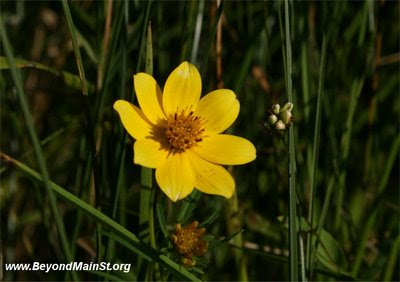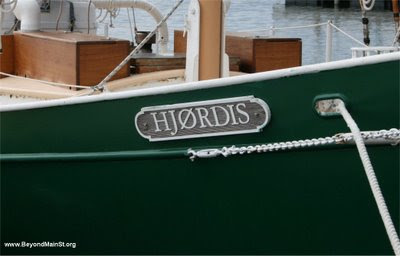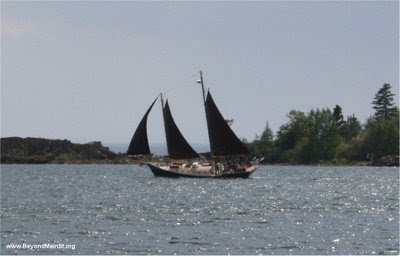The Hjordis, a 50' gaff-rigged Schooner owned by the North House Folk School in Grand Marais, MN. The name is taken from a Norse goddess who allegedly sharpened warrior's swords between her breasts. The Hjordis, as related to us by Captain Ben, had an interesting history of its own, having spent time in both the Great Lakes and the Caribbean.Sorry things have been quiet for a bit. Took the North House Folk School's one-day
Craft of Sail course aboard the Hjordis in Grand Marais, MN. Fascinating course; have been a fan of nautical history and nautical historical fiction from Homer to Melville and Patrick O'Brian, but you don't get a real feel for the art and science of sailing until you're out on the water, at the wheel or tending the rigging. Had an awesome day of it with just enough wind to make things interesting. Pulled back into harbor just as a sudden storm hit.
While the Great Lakes may not get as many age of sail buffs as the Mediterranean or Trafalgar, Superior was once host to the largest sail-borne fishing fleet in the world. In Moby Dick, several of the Pequod's fictional hands were Great Lake fisherman, and Melville himself made mention of their prowess and seamanship. The truth is that Great Lake seamanship can take more skill than ocean sailing, not only because the winds are less predictable and there's far more lee shore to be had, but because waves, as cited by our captain, are typically more severe. Rollers that, on the Atlantic may be three feet high and three seconds from peak to peak, would likely be the same height, but one second across on Superior.
The Hjordis tacking in Grand Marais Harbor.The sustainability and almost nonexistent carbon footprint of sailing is an awesome thing; the ability to spend days on the water, to even travel around the world, without burning a single drop of petroleum seems a romantic fiction in this post-industrial age, but perhaps, as evidenced by the adoption of
kite-powered shipping vessels, old things will become new again.
Grand Marais was awesome; the Summer solstice festival was getting underway just as we left, and the town was packed.
Came back to find our first pinkish-green strawberry vanished; likely the victim of a bird or the cottontail we've seen hanging around our backyard. That's fine, really as we've put a small mesh cover around the remaining strawberries.
Harebell are blossoming, and the non-native in the yard have responded to the sprays, giving us hope that, with care, we won't have to stray much further from our ordinarily organic ways.



















































